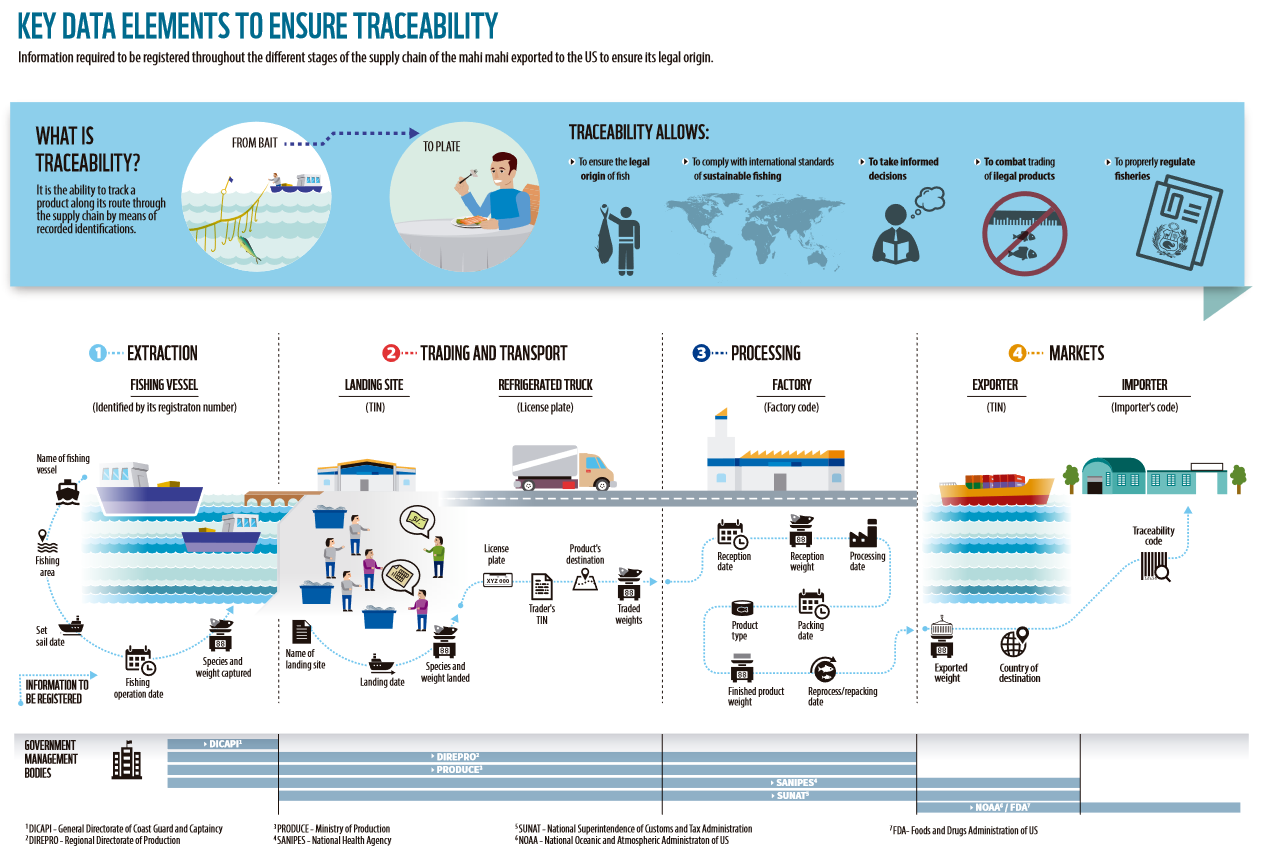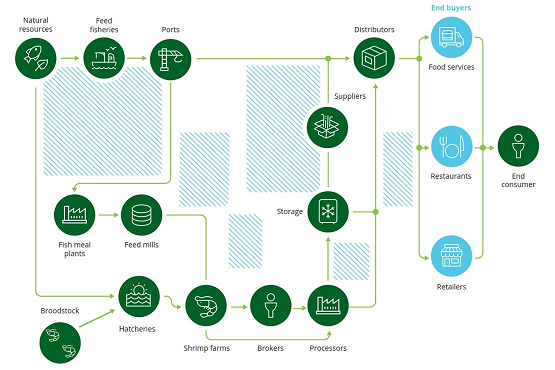Home
| About
| Mine Tracker
| RSS
| Footer
▄▄▄▄▄▄▄▄▄▄▄▄▄▄▄▄▄▄▄▄▄▄▄▄▄▄▄▄▄▄▄▄▄▄▄▄▄▄▄▄▄▄▄▄▄▄▄▄▄▄▄▄▄▄▄▄▄▄▄▄▄▄▄▄▄▄▄▄▄▄▄▄▄▄▄▄▄▄▄▄▄▄▄▄▄▄▄▄▄▄▄▄▄▄▄▄ █▄▄░▄▄█░▄▄▀█░▄▄▀█▀▄▀█░▄▄███░▄▄▀█░▄▄▀█░▄▀███▄▄░▄▄█░▄▄▀█░▄▄▀█▀▄▀█░▄▄█░▄▄▀█░▄▄▀██▄██░███▄██▄░▄█░██░ ███░███░▀▀▄█░▀▀░█░█▀█░▄▄███░▀▀░█░██░█░█░█████░███░▀▀▄█░▀▀░█░█▀█░▄▄█░▀▀░█░▄▄▀██░▄█░███░▄██░██░▀▀░ ███░███▄█▄▄█▄██▄██▄██▄▄▄███▄██▄█▄██▄█▄▄██████░███▄█▄▄█▄██▄██▄██▄▄▄█▄██▄█▄▄▄▄█▄▄▄█▄▄█▄▄▄██▄██▀▀▀▄ ▀▀▀▀▀▀▀▀▀▀▀▀▀▀▀▀▀▀▀▀▀▀▀▀▀▀▀▀▀▀▀▀▀▀▀▀▀▀▀▀▀▀▀▀▀▀▀▀▀▀▀▀▀▀▀▀▀▀▀▀▀▀▀▀▀▀▀▀▀▀▀▀▀▀▀▀▀▀▀▀▀▀▀▀▀▀▀▀▀▀▀▀▀▀▀▀
WWF, Key Data Elements (KDE) and Traceability
https://wwflac.awsassets.panda.org/downloads/triptico_kde_en.pdf

2 page infographic / PDF
https://wwflac.awsassets.panda.org/downloads/triptico_kde_en.pdf

2 page infographic / PDF
WWF, Traceability principles for wild-caught fish products
https://wwfint.awsassets.panda.org/downloads/wwf_traceability_principles_for_wild_caught_fish_products_.pdf

Principle 1 — Essential Information
All wild-caught fish product traceability systems should provide rapid access to reliable information that is efficient to assess the compliance of the fish product under consideration with all applicable legal requirements.
Principle 2 — Full Chain Traceability
All wild-caught fish product traceability systems should be able to provide “full chain” traceability from the point of catch to the point of final sale, and should be able to establish a verifiable and complete chain of custody/ownership of the product as it moves through the supply chain.
Principle 3 — Effective Tracking of Product Transformations
All wild-caught fish product traceability systems should record tracking of product transformations and information on the location of product sufficiently to ensure that the legal origin of products can be readily established at the final point of sale, and that claims related to sustainability or fishing methods are readily verifiable.
Principle 4 — Digital Information and Standardized Data Formats
Wild-caught fish product traceability systems should employ electronic recording of data, labelling, and tracking in standard data formats from point of capture to point of final sale.
Principle 5 — Verification
All wild-caught fish product traceability systems, and all claims based on them, must be subject to credible and transparent external verification mechanisms and regular independent audits, including effective governmental oversight and enforcement as well as, where applicable, credible third-party verification.
Principle 6 — Transparency and Public Access to Information
All wild-caught fish product traceability systems should be as transparent as possible and should provide consumers and other stakeholders the information needed to inform responsible choices
https://wwfint.awsassets.panda.org/downloads/wwf_traceability_principles_for_wild_caught_fish_products_.pdf

Principle 1 — Essential Information
All wild-caught fish product traceability systems should provide rapid access to reliable information that is efficient to assess the compliance of the fish product under consideration with all applicable legal requirements.
Principle 2 — Full Chain Traceability
All wild-caught fish product traceability systems should be able to provide “full chain” traceability from the point of catch to the point of final sale, and should be able to establish a verifiable and complete chain of custody/ownership of the product as it moves through the supply chain.
Principle 3 — Effective Tracking of Product Transformations
All wild-caught fish product traceability systems should record tracking of product transformations and information on the location of product sufficiently to ensure that the legal origin of products can be readily established at the final point of sale, and that claims related to sustainability or fishing methods are readily verifiable.
Principle 4 — Digital Information and Standardized Data Formats
Wild-caught fish product traceability systems should employ electronic recording of data, labelling, and tracking in standard data formats from point of capture to point of final sale.
Principle 5 — Verification
All wild-caught fish product traceability systems, and all claims based on them, must be subject to credible and transparent external verification mechanisms and regular independent audits, including effective governmental oversight and enforcement as well as, where applicable, credible third-party verification.
Principle 6 — Transparency and Public Access to Information
All wild-caught fish product traceability systems should be as transparent as possible and should provide consumers and other stakeholders the information needed to inform responsible choices
Why tracing seafood from sea to plate is the next frontier in sustainability
https://www.worldwildlife.org/stories/why-tracing-seafood-from-sea-to-plate-is-the-next-frontier-in-sustainability
Traceability starts with attaching to each fish caught a set of information such as where and when the fish was caught, the name of the fishing boat, the license it carries, and the type of gear the fishers used. Detailed data are essential because tracing seafood from sea to plate is not a simple proposition. Global supply chains in this massive industry are complex; some fish might pass through a dozen different companies and several countries before reaching a dinner plate. Ensuring that traded fish have a detailed and connected data trail to their origin is the best way to inform assessments of a fishery’s impact on the environment and its labor practices. But there is no way to trace products through such complex journeys without a uniform standard for digital data collection and sharing. That’s why WWF spent years working with dozens of companies around the world to create the Global Dialogue on Seafood Traceability standards.
https://www.worldwildlife.org/stories/why-tracing-seafood-from-sea-to-plate-is-the-next-frontier-in-sustainability
Traceability starts with attaching to each fish caught a set of information such as where and when the fish was caught, the name of the fishing boat, the license it carries, and the type of gear the fishers used. Detailed data are essential because tracing seafood from sea to plate is not a simple proposition. Global supply chains in this massive industry are complex; some fish might pass through a dozen different companies and several countries before reaching a dinner plate. Ensuring that traded fish have a detailed and connected data trail to their origin is the best way to inform assessments of a fishery’s impact on the environment and its labor practices. But there is no way to trace products through such complex journeys without a uniform standard for digital data collection and sharing. That’s why WWF spent years working with dozens of companies around the world to create the Global Dialogue on Seafood Traceability standards.
Traceability with TransparenC
https://www.worldwildlife.org/transparenc

Food supply chains are complex and verifying claims of responsible or sustainable production is challenging. Yet growing demand from consumers to know where their food is coming from, and new regulations are demanding transparency and accountability across all stages of production. Investing in traceability helps ensure all food commodities, from shrimp to palm oil, travel through the supply chain with clear visibility on social and environmental impacts, including food safety, environmental degradation, labor and human rights, and more.
Food production is a major economic activity for people around the world but particularly in developing countries. Traceability technology can be costly for food producers to utilize, so World Wildlife Fund set out to develop accessible technologies that remove the cost barriers that prevent advancing traceability across these supply chains.
Traceability in our food system often collapses due to an inability to organize diverse actors in complex supply chains. To alleviate these pressures, WWF developed transparenC, the first open-source, free, traceability software for commodity supply chains. This cloud-based smartphone app and desktop web portal can be used anywhere by farmers, buyers, retailers, and everyone in between without paying licensing fees that can be a barrier for disaggregated supply chains, especially in developing countries.
https://www.worldwildlife.org/transparenc

Food supply chains are complex and verifying claims of responsible or sustainable production is challenging. Yet growing demand from consumers to know where their food is coming from, and new regulations are demanding transparency and accountability across all stages of production. Investing in traceability helps ensure all food commodities, from shrimp to palm oil, travel through the supply chain with clear visibility on social and environmental impacts, including food safety, environmental degradation, labor and human rights, and more.
Food production is a major economic activity for people around the world but particularly in developing countries. Traceability technology can be costly for food producers to utilize, so World Wildlife Fund set out to develop accessible technologies that remove the cost barriers that prevent advancing traceability across these supply chains.
Traceability in our food system often collapses due to an inability to organize diverse actors in complex supply chains. To alleviate these pressures, WWF developed transparenC, the first open-source, free, traceability software for commodity supply chains. This cloud-based smartphone app and desktop web portal can be used anywhere by farmers, buyers, retailers, and everyone in between without paying licensing fees that can be a barrier for disaggregated supply chains, especially in developing countries.
WWF Traceability in Farmed Shrimp
https://seafoodsustainability.org/aquaculture/farmed-shrimp/traceability/

Today’s shrimp supply chains are long, complex, and often opaque. Without visibility, it is impossible to handle food safety concerns, prove legality, and verify sustainability—all issues that consumers, investors, regulators, and media are increasingly demanding. Traceability is essential to demonstrating that a product is ethically and sustainably sourced.
https://seafoodsustainability.org/aquaculture/farmed-shrimp/traceability/

Today’s shrimp supply chains are long, complex, and often opaque. Without visibility, it is impossible to handle food safety concerns, prove legality, and verify sustainability—all issues that consumers, investors, regulators, and media are increasingly demanding. Traceability is essential to demonstrating that a product is ethically and sustainably sourced.